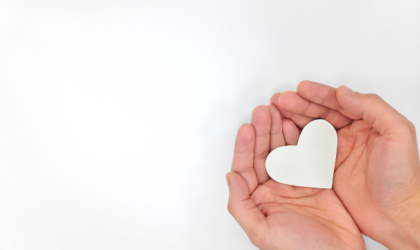
The central nervous system (CNS) rules virtually every part of the body and mind. It orders our legs to walk, heart to beat, and lungs to breathe. We owe our very existence to it. And despite years of scientific research, the central nervous system continues to amaze us with its complexity and intricacy.
What is the central nervous system?
The nervous system is organised into two main parts: the central nervous system, which comprises the brain and spinal cord, and the peripheral nervous system, which contains all of the other nerves in the body.
Safely encased within the skull and vertebral canal of the spine, the central nervous system receives, processes, and stores information from the rest of the nervous system and regulates the body’s responses, such as triggering physical discomfort if you stepped on a nail, for instance (1).
Broadly speaking, the central nervous system controls movement, emotions, and desires, as well as breathing, heart rate, and hormones
What are the main parts of the central nervous system?
The central nervous system consists of three main parts: the brain, the spinal cord, and a complex network of neurons (nerve cells) (2).
The brain
It can be helpful to think of the brain as the commander-in-chief that oversees your bodily functions.
The brain gathers information from your five senses – taste, touch, sight, smell, and sound (3). It controls how you learn and remember, what you think and feel, and the way you talk and move. The brain also regulates the involuntary processes that you aren’t consciously aware of, like digestion and breathing.
The rest of the nervous system relays messages back and forth from the brain to different corners of the body.
The spinal cord
The spinal cord is a long, tube-like band of tissue that connects the brain to your lower back.
The purpose of the spinal cord is to carry nerve signals from your body to your brain and vice versa (4). It controls body movements and functions, reports senses to your brain, and manages your reflexes.
Neurons
The building blocks of the central nervous system, neurons transport information to other nerve cells, gland cells, or muscles (5).
In general, neurons are classified into three groups:
Sensory neurons
Sensory neurons are activated by chemical and physical inputs, such as touch and heat (6). Submerging in a cold plunge pool, for instance, would activate the sensory neurons in your skin. Those neurons send a message to your brain, which makes you aware of the cold.
Motor neurons
Motor neurons support both voluntary and involuntary movement (7). These neurons enable the brain and spinal cord to communicate with muscles, organs, and glands all over the body.
If you touched a hot plate, motor neurons would respond to the signals from the sensory neurons, making the muscles in your arms lift to protect you from burning yourself.
Interneurons
Found in your brain and spinal cord, interneurons are situated between sensory and motor neurons (8). They serve as a relay station, passing signals from motor neurons to other interneurons and sensory neurons to other interneurons.
For instance, if you stepped on a nail, the sensory neurons in your feet would send a signal to the interneurons in your spinal cord. Some interneurons would then transmit a signal to the motor neurons in your foot, allowing you to move it away, while others would communicate to the discomfort centre in your brain.
Central nervous system support
There are plenty of ways to keep your central nervous system healthy and happy. Prioritising sleep, managing stress, and eating a nutritionally-dense diet are some of the best tools to keep this delicate system in check. Avoiding smoking and drinking to excess will also support your central nervous system.
Find out more about supporting your nervous system, naturally, here.
What vitamins support the central nervous system?
Alongside following a healthy, balanced, whole-food diet, you may wish to include the following nutrients to support your central nervous system.
B vitamins
The family of B vitamins are involved in many different biochemical processes. In particular, vitamins B1, B3 (niacin), B6, B7 (biotin), and B12 contribute to the normal functioning of the nervous system. Find them: Green leafy vegetables.
For additional support, you might consider our high-strength B-complex, Neuro-B. This all-in-one formula is designed with healthy nerves in mind, containing relevant
Iodine
Iodine is an important trace mineral needed in small quantities to support health. Crucially, iodine supports normal nervous system function. Find it: Prunes.
Magnesium
An essential mineral involved in over 300 biochemical processes; magnesium contributes to the normal functioning of the nervous system. Find it: Pumpkin seeds.
Vitamin C
Aside from immune health, vitamin C also plays an important role in supporting nervous system function. Find it: Goji berries.
Vitamin D3
Vitamin D is vital for good health. Some experts believe low levels may affect the nervous system (9). Find it: Eggs yolks.
Omega-3
The long-chain omega 3 fatty acids, EPA (eicosapentaenoic acid) and DHA (docosahexaenoic acid) are important to overall health. In particular, DHA contributes to the maintenance of normal brain function.* Find it: Oily fish or plant-based microalgae.
* A beneficial effect is obtained with a daily intake of 250mg of DHA
Adaptogenic herbs
Adaptogenic herbs, like ashwagandha, Siberian Ginseng, and Korean Ginseng, are often recommended by nutritionists as they can be a helpful part of a supplement regime. (10).
Palmitoylethanolamide
PEA is an endocannabinoid-like compound found in almost every cell, tissue, and fluid in the body. Naturally produced when cells are damaged or threatened, PEA is a well-researched alternative to CBD. It’s a popular choice to support overall wellbeing, nervous system function, and physical discomfort.
Theanine
The amino acid found in tea, theanine, is a useful addition for those looking to support their nervous system function and emotional health.
Turmeric
The active compound in turmeric, curcumin, has been celebrated for generations. Many people take it to support their overall health and wellbeing (11).
Want to learn more?
If you want to find out more about supporting your nervous system, please explore the rest of our dedicated health blog. Alternatively, please get in touch with our team of expert Nutrition Advisors, who are on hand to provide free, confidential advice via email, phone, and Live Chat.
References:
-
Anatomy, central nervous system - statpearls - NCBI bookshelf (2022). Available online: https://www.ncbi.nlm.nih.gov/books/NBK542179/
-
Cherry, K. (2022) Structure and function of the Central Nervous System, Verywell Mind. Verywell Mind. Available online: https://www.verywellmind.com/what-is-the-central-nervous-system-2794981/
-
Brain basics: Know your brain (no date) National Institute of Neurological Disorders and Stroke. U.S. Department of Health and Human Services. Available online: https://www.ninds.nih.gov/health-information/public-education/brain-basics/brain-basics-know-your-brain
-
Spinal cord: Function, anatomy and structure (2023) Cleveland Clinic. Available online: https://my.clevelandclinic.org/health/body/21946-spinal-cord
-
The neuron (2023) BrainFacts.org. Available online: https://www.brainfacts.org/brain-anatomy-and-function/anatomy/2012/the-neuron
-
National Center for Biotechnology Information. Available online: https://www.ncbi.nlm.nih.gov/books/NBK539846/
-
Katy McLaughlin, P.D. (2020) Motor neuron - the definitive guide, Biology Dictionary. Available online: https://biologydictionary.net/motor-neuron/
-
Interneuron. Interneuron - an overview. ScienceDirect Topics. Available online: https://www.sciencedirect.com/topics/neuroscience/interneuron
-
Wrzosek M, ?ukaszkiewicz J, Wrzosek M, Jakubczyk A, Matsumoto H, Pi?tkiewicz P, Radziwo?-Zaleska M, Wojnar M, Nowicka G. (2013) Vitamin D and the central nervous system. Pharmacol Rep. 65(2):271-8
-
Panossian A, Wikman G. (2010) Effects of Adaptogens on the Central Nervous System and the Molecular Mechanisms Associated with Their Stress-Protective Activity. Pharmaceuticals (Basel). 19;3(1):188-224.
-
Kulkarni SK, Dhir A. (2010) An overview of curcumin in neurological disorders. Indian J Pharm Sci. 72(2):149-54.
Related Posts

Olivia
Olivia Salter has always been an avid health nut. After graduating from the University of Bristol, she began working for a nutritional consultancy where she discovered her passion for all things wellness-related. There, she executed much of the company’s content marketing strategy and found her niche in health writing, publishing articles in Women’s Health, Mind Body Green, Thrive and Psychologies.
View More






